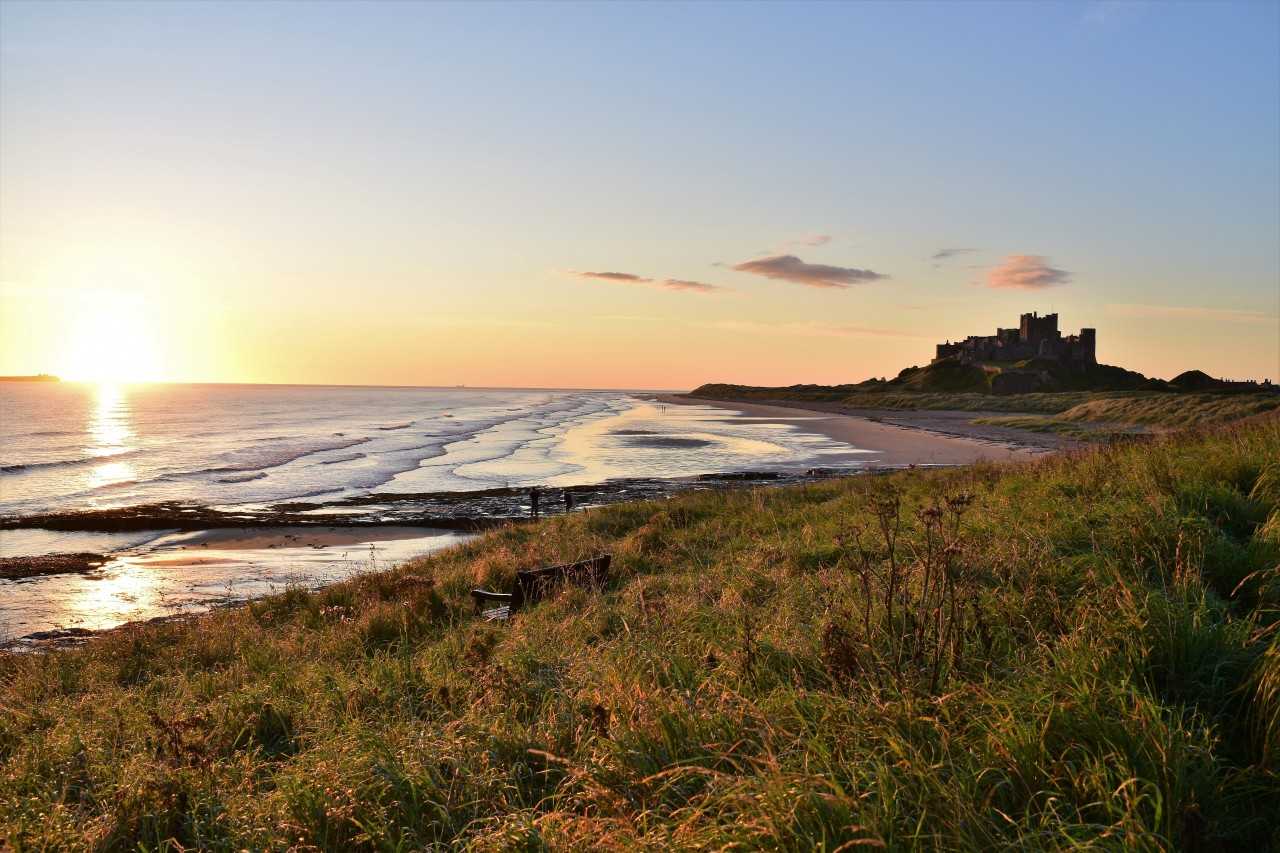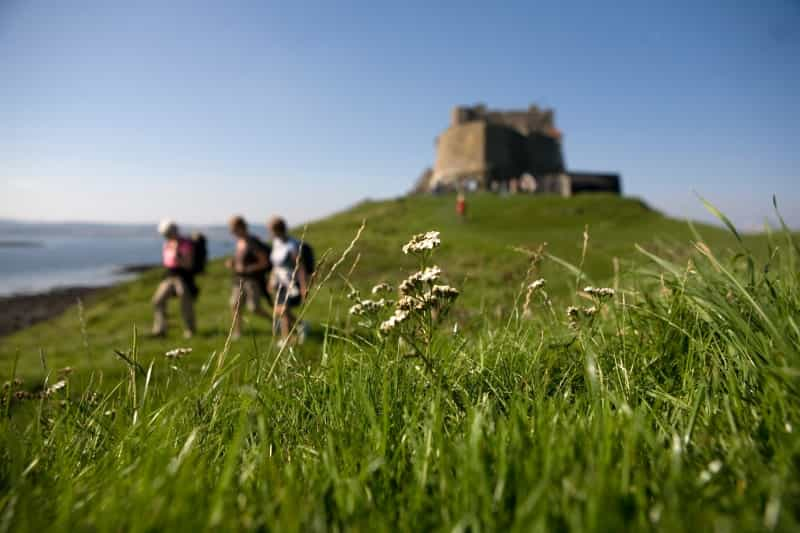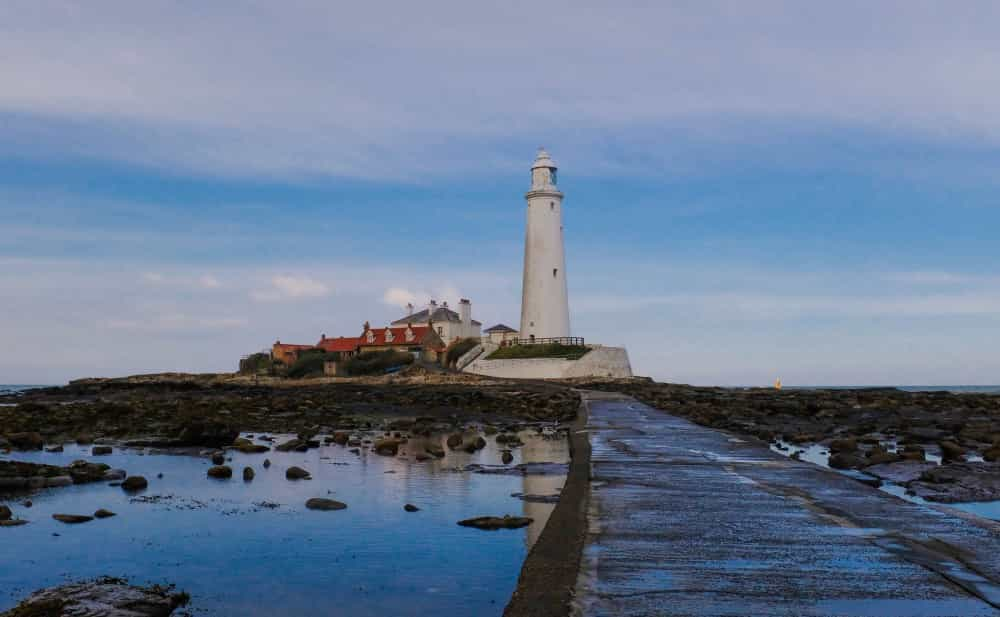6 Of The Best Northumberland Coast Walks
With long sandy beaches backed by grassy dunes, medieval castles in varying states of disrepair and wildlife-rich nature reserves, the Northumberland coast is an Area of Outstanding Natural Beauty (AONB) and a hotspot for walking holidays.
It’s fortunate, then, that the Northumberland Coast Path runs much of its length, covering the 62 miles from Cresswell in the south to Berwick-upon-Tweed, which is as close to Scotland as you can be while still standing on English soil.
Dogs are welcome on most beaches, but keep them on a lead when walking through the sand dunes, where birds may be roosting, and when approaching livestock and other wildlife.
With several campsites and holiday parks within 15 miles of the coast, you never have far to go for a seafront hike. Are you ready to get rambling? Here are six of the best coastal walks in Northumberland.

Cresswell to Amble, 8.1 miles
Sandy beach with dunes, nature reserves and harbour dining
If you’re going to tackle the Northumberland Coast Path, you might as well start at the beginning: the small village of Cresswell.
Walk along the expansive golden crescent of Druridge Bay, fringed by sand dunes, checking out nature reserves like Cresswell Pond and Druridge Pools along the way. But the real prize for birdwatchers lies further ahead, at Hauxley, where they might spot curlews, lapwings and redshanks, as well as otters and stoats.
Push on to the aptly named coastal village of Amble for fish and chips and a pint by the harbour. If you can’t face the walk back just yet, take the hour-long puffin cruise to nearby Coquet Island.
Howick to Embleton Bay, 3.9 miles
Family-friendly walk with rockpools and views of Dunstanburgh Castle
From Howick, the coastal path runs along a rugged stretch of shore where curious youngsters can explore tidal rockpools and caves. Stock up on the renowned local kippers at the village of Craster, then continue through grazing farmland.
The ruins of 14th-century Dunstanburgh Castle will soon come into view on a rocky outcrop in the distance. Take a moment to admire the forbidding stone walls, the wave-battered coast below and the wading birds that make their home here.
After this dramatic landscape comes Embleton Bay, a vast expanse of golden sand backed by vegetation-covered dunes. Take off your hiking boots and have a paddle or, if stomachs are rumbling, continue to the next bay for a meal with a view at the historic Ship Inn in Low Newton-by-the-Sea.
Beadnell Bay to Bamburgh Castle, 7.3 miles
Coast-and-castle walk with sand dunes and birdwatching
From Beadnell Bay’s sandy beach, follow the St. Oswald’s Way coastal path (with a little detour on the volcanic spur of Ebb’s Nook) to Annstead Dunes, a nature reserve where a small team of Exmoor ponies grazes away to keep the shrubby vegetation in check.
Birdwatchers might take a break at the coastal village of Seahouses to join a cruise around the Farne Islands, with their colonies of puffins and guillemots, plus grey seals. Or continue your hike past the sandy beach north of Seahouses, with its grassy dunes and rockpools, until you reach Bamburgh beach.
The huge bulk of Bamburgh Castle dominates the northern end of this wide expanse of flat sand. With coastal views and medieval displays, including an armoury, this Norman stronghold is well worth a stop.
Holy Island, about 5 miles
Circular route with beaches, gardens and centuries-old ruins
Keep an eye on tide times for this circular walk of Holy Island, as it’s cut off from the mainland when the sea comes in.
From the car park at the end of the causeway, walk through the grassy dunes to the north shore past sandy beaches, rocky headlands and tidal pools.
Take a breather at Emmanuel Head’s white pyramid (a navigational aid), then walk down the east coast towards 16th-century Lindisfarne Castle, high on a rocky outcrop, stopping at the colourful Gertrude Jekyll Garden en route. Then it’s on to the atmospheric medieval ruins of Lindisfarne Priory, before heading back to the car park.

Cheswick Sands to Berwick-upon-Tweed, 4.9 miles
Family-friendly walk with fossil hunting and sea safaris
Cheswick Sands’ grassy dunes and tidal pools will keep the kids entertained while you take in the views of both your destination of Berwick-upon-Tweed and Holy Island behind you.
Move on to Cocklawburn beach to let the kids go fossil hunting among the flat limestone shelves, then keep walking along the clifftop path to Spittal beach. Here, a paved promenade stretches all the way to Berwick-upon-Tweed’s harbour.
Give your feet a rest with a sightseeing boat tour that takes in this border town’s castle ruins, Elizabethan walls and bridges. Or embark on a sea safari looking for birds, seals and the occasional dolphin.
Around St. Mary’s Island
Rockpools and wildlife, plus a detour to Roman ruins
A cheeky addition to a list of Northumberland coastal routes, this walk actually takes place in nearby Tyne and Wear. At the northern end of Whitley Bay, a short causeway surrounded by rockpools teeming with aquatic life leads to St. Mary’s Island. Climb the 1898 lighthouse for far-reaching coastal views and exhibits on the surrounding nature reserve, which is home to seabirds, kestrels and grey seals.
For another exception to the ‘coastal walks’ list, drive inland to Wallsend. Its industrial landscape belies a venerable past as the eastern end of Hadrian’s Wall, the 73-mile long fortification that once marked the northernmost border of Roman Britain.
After visiting the excavations at the Segedunum Roman Fort and Museum (and catching a first glimpse of the mighty wall), take the one-hour drive west to Steel Rigg. Here, in the middle of Northumberland National Park, you’ll find some of the best-preserved sections of Hadrian’s Wall, plus excavated forts and villages.

With so much ground to cover along the diverse Northumberland coast – and so many top things to do in Northumberland – you’ll want to spend at least a few days in the region. Browse our list of campsites in Northumberland to find the right accommodation for your walking holiday. If you want to go a little further afield, see our North East England Camping Guide.